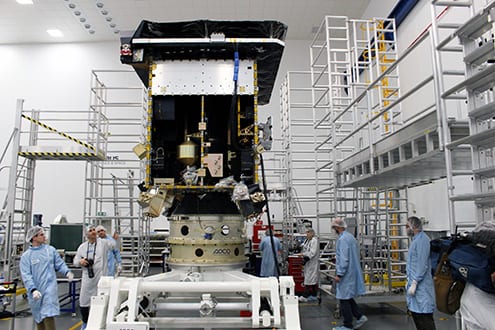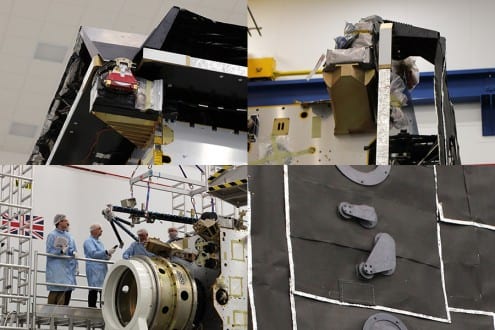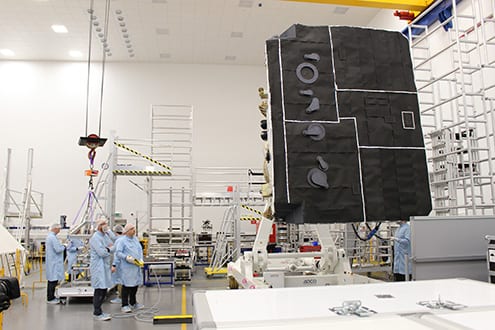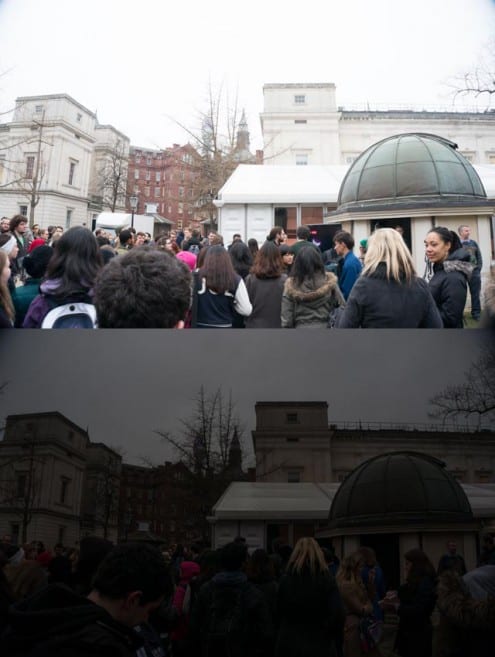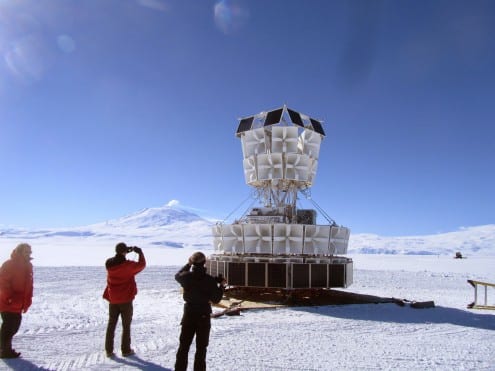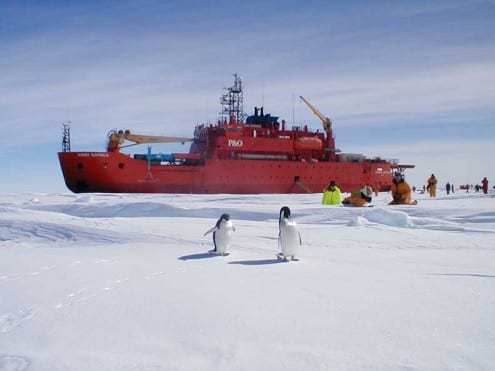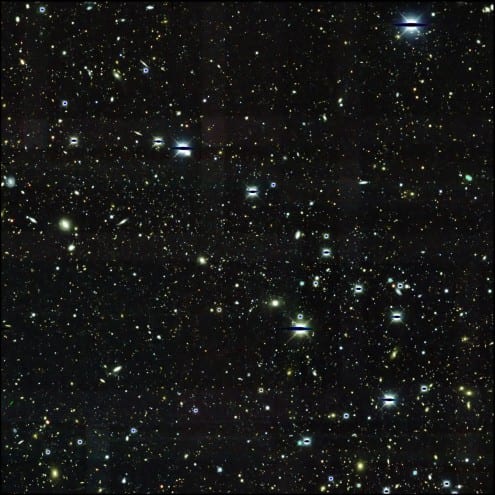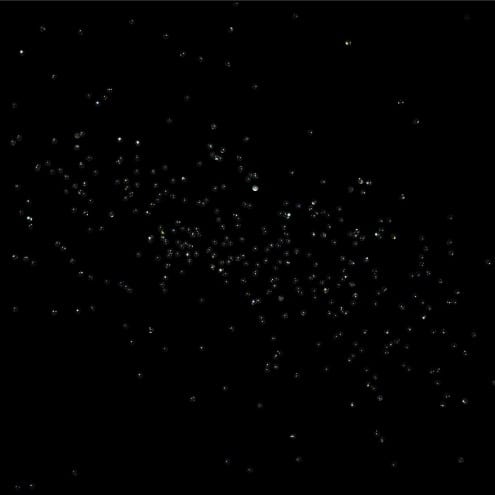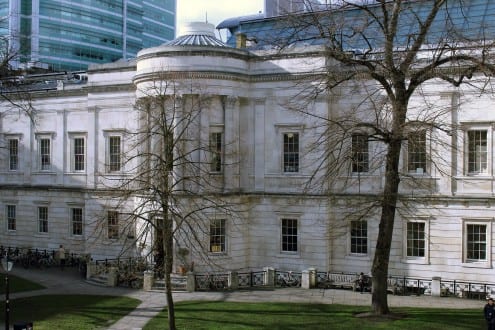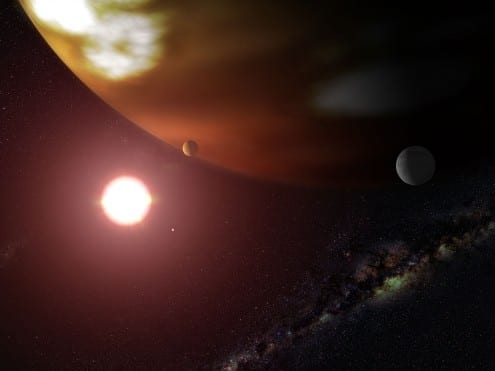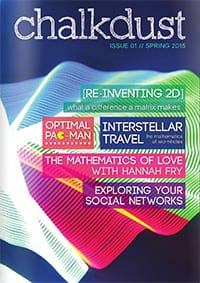 This interview is an excerpt of Chalkdust, a new mathematics magazine written and edited by UCL students.
This interview is an excerpt of Chalkdust, a new mathematics magazine written and edited by UCL students.
Read more at chalkdustmagazine.com
Hannah Fry is a lecturer at the Centre for Advanced Spatial Analysis (CASA) at UCL. In addition to her research on the mathematics of social systems, Hannah also does a lot of public engagement – showing the general public some of the fascinating ways that Maths can be used in the real world. She’s given TED talks, spoken on TV and radio, made YouTube videos, and performed in science stand-up and stage shows. Most recently, she has written a book called The Mathematics of Love, and presented the BBC documentary Climate Change by Numbers.
Maths and the Real World
Would you like to tell our readers a bit about your mathematical background?
I did my undergraduate degree in Maths here at UCL and I much preferred the applied side. I then did my PhD in fluid dynamics with Prof. Frank Smith, doing lots of lovely asymptotic analysis. My postdoc was a bit different. I think fluids is a really great place to train, but it’s hard to find a really good postdoc in fluids, and you can’t pick the subject that you want to work on. So this postdoc came up using mathematics to look at social systems – things like trade, migration and security. And I just thought it was an interesting topic and came over here to CASA, and I’ve been here ever since!

Because there’s loads of mathematicians at CASA, aren’t there?
Yes there’s a big group of us actually. There’s quite a few PhD students who are joint supervised by people in the maths department. And there’s also physicists and computer scientists. So you get a really nice mix.
I think people often don’t realise that mathematicians work in so many different areas of research, across lots of university departments. It’s genuinely useful for so many applications.
Yes, I think that really links in with the point I was trying to make with my book, The Mathematics of Love. You can’t think of maths just as this abstract thing that exists only in isolation. I genuinely struggle to find a topic where maths can’t offer you at least some use or insight. I mean, I’ve published in archaeology journals! So I wanted to prove that even if you take love, the thing that is as far away from maths as possible, there is still some genuinely nice maths to be found.
So which aspects of love have been modelled in your book then?
It takes you on a little tour of every possible aspect of dating life. It starts with somebody who is single and desperately hoping to meet somebody, exploring how to increase your chances of bumping into somebody you like at a party or meeting someone online. It then looks at strategies you can employ when dating, how to choose when to settle down, and even how to plan your wedding, with optimal seating plans and invitation lists. And finally there’s my favourite bit, which is a serious academic study – a collaboration between psychologists and mathematicians – looking at long term relationships through a mathematical lens.
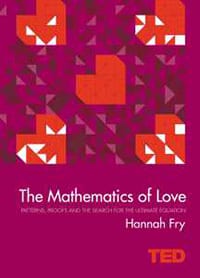 Has writing the book made you think differently about your own love life at all?
Has writing the book made you think differently about your own love life at all?
Well I think the stuff at the end about long term relationships and arguing definitely has some relevance and is really interesting. The main point of it is that you should have little positive arguments often, rather than letting things build up. So now, if there’s a choice of letting something go or not, I choose not to let it go.
My favourite bit was the chapter on how to decide when to settle down with a partner. People could make some quite big life decisions from that!
I’ve had loads of people on twitter say to me, “Thanks a lot for your book, but I’ve realised now it’s over!”
Another thing I like about the book is how similar models can be used to explore lots of different phenomena. For example, choosing a long term partner and deciding which interviewee to hire.
Yeah, you see that’s what I find really exciting about maths, you find these connections between these things that don’t seem to be connected at all. So similar maths can be used to describe arms races and arguments between married couples. As soon as someone says this to you, you can see the analogy and it becomes really obvious. But it’s not really obvious until you transcribe it into mathematical language.
Yes, sometimes writing down the model is the really useful part.
Yes, I think the whole point is that you want mathematical models to start off being tangible and common sense. Once you’ve written them down in a concrete way, that’s when you can start finding the counter intuitive results, and there are plenty of them.
I had a conversation the other day with a friend who thought that applying mathematics to love was going a bit too far. I think she thought that your book was trying to tell people the exact truth about how to conduct their love life.
I completely agree that these models are a representation of reality, not reality itself. And I think that people who put too much faith in mathematical models are demonstrating as much of a misunderstanding of maths as people who don’t trust models at all. So the example that I always give to my students is Google Maps. If it says your journey is an hour and twenty minutes, nobody believes it will take exactly that long, but having that representation is much more useful than having nothing at all.
Some people might say that some of the stuff in the book isn’t maths, it’s psychology or economics, what would you say to that?
Well, I think the lines get really blurred, and the discipline boundaries are a bit old fashioned. It’s certainly true that a lot of economists are doing similar roles to mathematicians, likewise physicists, likewise some psychologists. But I think the difference comes down to what you think is important and interesting. In my job, the process is: you collect the data about the real world, you analyse it using statistics, you create the mathematical model and you use the mathematical model to give you insights. And the last bit is what I really love. But other people in this office do exactly the same job as me but they focus on different stages. So the computer scientists like data mining and construction and other people find the statistics really interesting.
Maths and the Public
Why do you think that maths has such a big PR problem? For instance, physics is equally nerdy, but they’ve got space and the large Hadron Collider and so on. What theoretical physicists actually do is basically maths, and somehow physics ends up with all the glamour whereas maths has very little.
Well actually I think that there’s loads of glamour in maths. For example, using Hilbert spaces for image recognition, the emergence of fractals in city growth, or predictive crime.
However the only example that mathematicians ever bother to bring up is codebreaking and prime numbers! I don’t think mathematicians value making their subject exciting in the same way that physicists do.
Do you think that there’s anything that mathematicians who aren’t interested in the applications of maths can do to engage with the public?
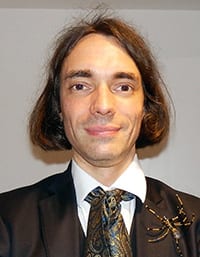
Cedric Villany
Photo: Espace des Sciences
So, there’s a guy called Cedric Villani, who’s won a Fields Medal and he’s just written a book called Birth of A Theorem about the mathematical process. I think that’s a really captivating story. And then there’s the Fermat’s Last Theorem documentary about Andrew Wiles that Simon Singh made. Both of those are really exciting, but again they’re not really about the maths. You’re taking maths and you’re anchoring it to a human story that people can latch on to. It’s very difficult for people to appreciate the abstract. It’s not enough to say, “by the way, this maths is really beautiful.”
For a lot of people, their main experience of maths is of finding it boring and dry at school. Is there anything we can do to change that?
Well I don’t think that you can change the curriculum. Also, teachers know so much about getting pupils to understand maths that I would never try to pretend to know the answer to that. But what I think you can do is go into schools and do exciting things. I do stage shows about maths, and there was one in particular in Palace Theatre on Charing Cross Road, with 3000 school children. It was basically 3 maths lectures, which I know sounds really boring, but we had Matt Parker, a comedian who’s incredibly funny. All the kids were laughing and screaming and loving all these little bits of maths that they can anchor to things they know about already. That really lets you show them how far maths can go.
Women in maths
As we are both aware, there is a huge gender imbalance in maths, particularly at more senior levels. At UCL at least, nearly 50% of undergraduate students are female, but for PhD students, it’s more like 15%. Why do you think this is?
Well, first things first, it’s definitely not because of lack of ability. Let’s just get that out there. I also don’t think that it’s because people are sexist. I think the reason is that everything used to be really male focused, and the support structures that are in place haven’t ever been reassessed for more gender specific support. If you look at qualitative overviews of the difference in gender in mathematics, you can see a difference between how men and women view their own mathematical ability. Boys are like, this maths is hard; whereas the girls are like, I find this maths hard.

Ada Lovelace
I’m making a documentary for the BBC about Ada Lovelace, a female mathematician in the 19th Century, who worked closely with Charles Babbage who created the analytical engine, which was essentially the first computer. I’ve been doing a lot of research about her recently and you see the same story with her as you see with women in mathematics now. The amount of foresight that she had about the analytical engine was huge. Babbage himself didn’t realise its potential, but she did. She was the first person to work out that you could possibly use computers to do things other than maths. And that’s really incredible, but she really lacked confidence in her ability.
That’s so interesting!

Babbage’s Analytical Engine
Photo: Mirko Tobias Schaefer
For example, Babbage was trying to get money for this analytical engine, which Ada wrote the first program for. He went to Robert Peel, the prime minister at the time, and ended up having this shouting match with him and achieving nothing. Ada wrote Babbage this 2000 word letter begging him to let her do the PR for the analytical engine because she was so much calmer and she completely understood it’s potential. Although Babbage did respect Ada, he said no, and because she lacked confidence, she then didn’t push it. She thought that he knew best and she didn’t have faith in her own ability. And if she had, who knows what would have happened. The analytical engine could have been built and then the first computer could have been created a hundred years before it actually was. And there’s lots of parallels between that and the way that women are now.
I think it’s very difficult to imagine yourself doing something if you’ve never seen anyone like you doing it. So I personally think the visibility of women in maths and the availability of role models are massively important.
Yes, I agree. So often when I do school events, I get girls come up to me and ask “Is it really hard because they’re all boys?” And I’m like “no”, because particularly at undergraduate level that isn’t even the case. Actually I feel glad we’re living in a time when people are so keen to try and understand what’s going wrong and how to fix it.
- You can follow Hannah on Twitter @FryRSquared. The documentary Climate Change by Numbers is currently on BBC iPlayer, and The Mathematics of Love is now available in bookshops.
- Anna Lambert is a PhD student at UCL working on mathematical models of bioreactors. You can contact her on Twitter @anna_lambert

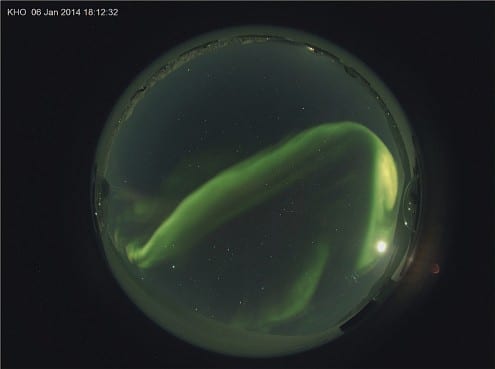

 Close
Close









